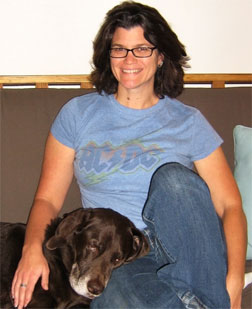How The Amy Young Barrier Removal Program
Got Its Name

Photo of Amy Young courtesy of Texas Council for Developmental Disabilities
The Amy Young Story
In May 2010, the Texas Department of Housing and Community Affairs launched its all-new Amy Young Barrier Removal Program, named in honor of one of the state’s most passionate and persuasive advocates for Texans with disabilities, Amy Young.
Amy, a public policy analyst with the Texas Council for Developmental Disabilities, passed away in September 2008 after a sudden illness, one year before TDHCA announced the new statewide housing program created in part from recommendations she had pushed for as part of an advocacy policy workgroup.
Amy not only gave shape to the much-needed program, she also urged the Department to offer the program through its state funded Housing Trust Fund (HTF), which provided greater flexibility and fewer regulatory restrictions than federally funded programs, making it an ideal vehicle for this initiative.
Amy’s passing left a true void in the disability community. Although she was not able to see her efforts come to fruition, the Department named its Barrier Removal Program in Amy’s honor as the program significantly improves the quality of life for hundreds of Texans with disabilities.
About the Program
Previously known as the HomeFree Barrier Removal and Rehabilitation Program, the Amy Young Barrier Removal Program helps finance home modifications that include the addition of handrails and ramps, widening of doors, adjusting countertops and cabinets to appropriate heights, installation of buzzing or flashing devices for persons with visual or hearing impairments, and installation of accessible showers, toilets, and sinks.
The Program provides one-time grants for up to $20,000 per home with at least 75 percent of each home’s total grant to be used for barrier removal. Up to 25 percent of each home’s total grant may be used for health or safety hazard removal, unless otherwise approved by the Department. Funds target qualifying individuals who earn no more than 80 percent of the area median family income.
Units of local government, nonprofit organizations, public agencies and Public Housing Authorities wishing to administer the program are encouraged to review the Notice of Funding Availability.
Individuals seeking assistance may search for local providers online or by calling the TDHCA’s Housing Resource Center toll free at 1-800-525-0657.
